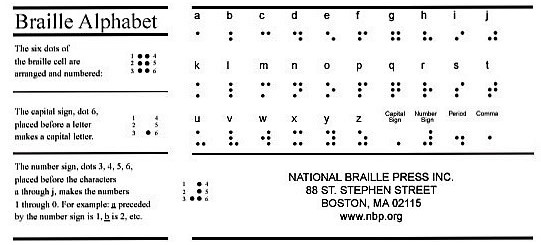This content is also available in:
Español (Spanish)
January is braille awareness month. Louis Braille, the creator of the braille code, was born on January 4.
There are many misunderstandings about braille. A few years ago, in Four Misconceptions to Learning and Reading Braille, I said, “It’s been my experience, with the occasional exception, most individuals with an acquired vision loss who did not grow up using braille express little interest in learning even the alphabet. Learning the alphabet would be enough to do some simple labeling around the house, workshop, or office. I wonder to what degree braille, like the long white cane, may simply be stereotypical symbols of vision loss that some are not ready to embrace regardless of their value?”
The Value of Braille
I believe braille does have great value. As Stephen Wilson, a VisionAware peer faced with hearing and vision loss as an adult, eloquently expresses, “I found braille to be the all-wonderful answer to my problem of losing sight and communication. When I originally learned I had retinitis pigmentosa, I was most concerned with communication because I knew how difficult this can be with sight and my dependency on lip reading… By learning braille and refreshable Bluetooth braille displays, I’ve eliminated my fears of that worst-case scenario. I feel I have a grip on communication even without hearing and sight.”

To Mary Hiland, another peer advisor, braille is more than “bumps on a page.” “Anyone can learn to read braille… It is simply a method of embossing letters and numbers so people who use the sense of touch can read. Braille is not raised letters but a combination of raised dots within a six-dot cell…I learned to read braille when I was 18, as my vision loss…became more severe. Learning that skill really changed my life.”
Okay, have I convinced you yet? If not, you should read our posts on Finding Braille in Everyday Places and The Relevancy of Braille. Can you guess where braille can be found routinely? Because of the Americans with Disabilities Act, braille is now on restroom and hotel doors, elevators, ATMs, and menus.
How Braille Can Be Used
Still not convinced? Think about how to use braille—even just learning the alphabet. It can be used for marking appliances, medications, pantry items; you name it. Being able to read even a little opens doors! In her recent post on the importance of braille for literacy, Lenore Dillon described a poignant moment with an older consumer she was serving. He wanted to learn braille immediately to play cards with his family on vacation. She said, “I taught him that he could play cards by adding a few additional letters to the numbers. He learned “A” for ace, “C” for clubs, “K” for King, “S” for Spades, and “Q” for queen. By trying this system, he could play cards with his family and even became somewhat of a card shark!”
Ok, I have convinced you. How can you learn braille? Find out more through my podcast on braille and regaining independence.
Resources for Learning Braille
Readers may find a local service provider by consulting the Directory of Services on VisionAware. Many state and private agencies providing vision rehabilitation services have professionals who can teach braille.
Hadley Institute Resources:
Braille Correspondence
For readers interested in learning more about braille, another great place to start is the Hadley Institute which offers braille correspondence courses through the mail using both audio and hard copy braille. Audio is sent on a DAISY Talking Book (DTB) cartridge or flash drive. Select “Learn” from the Main Menu to locate these workshops from the website. And choose “Braille” from the category options. The print and audio workshops are listed within the “Braille” series. Or call 800-323-4238. Hadley also has some new offerings listed below:
Braille by Sight Workshops
Hadley offers a new series of workshops called “Braille by Sight,” These highly interactive workshops are available at no cost, streaming from the website, after completing a simple, one-time registration login. Registration can be done online using the website or by calling Hadley Support Services toll-free at 800-323-4238. These interactive workshops are good for older adults new to vision loss and their family members. Each workshop invites learners to “Ask the Experts.” Here are the topics in the series:
1. Basic Braille by Sight: Reading Series;
2. Basic Braille by Sight: Writing Series;
3. Contracted Braille by Sight: Reading Series;
4. Contracted Braille by Sight: Writing Series;
5. Special Braille Symbols: Reading Series;
6. Special Braille Symbols: Writing Series;
7. Producing Braille Series.
Weekly Braille Discussion Group
Hadley hosts a live discussion group, Embracing Braille, moderated by Learning Experts Vileen Shah and Elyse Heinrich, and live every Thursday at 11:30 AM Central; all past episodes are archived. Registered learners can access the Zoom information from “Embracing Braille or by calling Student Services, listed above.
Other Cool Braille Stuff
- NFB Independence Market: Braille games, braille slates, braille watches, braille measuring tools, Dymo tape, and more.